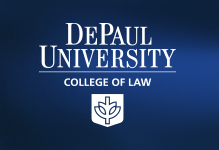Home > Law > DePaul Journal of Sports Law > Vol. 17 > Iss. 1
Article Title
Abstract
Playing sports is not the only way professional athletes generate income. In recent years, athletes have taken a deliberate approach towards building their personal brands to increase the value of their potential marketing and endorsement opportunities. The more known, liked, and marketable an athlete is, the greater their income potential.
Athletes can increase their marketability by eliciting and creating positive interactions with fans on social media. For example, when LeBron James decides to take to Instagram and post a photograph, many fans will view it and it will garner significant engagement. However, can LeBron post whatever image of himself he wants? Does he have free reign of posting as long as he is in the photograph? Where does copyright law stand on this? What are the rights for photographers? How do collective bargaining agreements in sports intersect with the rights of these individuals and this area of law?
Consider an image of LeBron towering over a defender slamming a basketball with dynamic authority during a rim-bending slam-dunk. In the background, 20,000 fans cheering, booing, celebrating, or in angst. The dunk comes in the midst of leading his team during a hard-fought road game, and due in part to his play, they come out victorious. LeBron surely may want to share this with his social media following. To begin, he is likely proud, but secondly, such a post would generate great interaction.
Posting such a photo may be great for James and his individual likeness, help grow his persona, and potentially lead to an increase in his net worth. However, are such posts legal? Are such posts permitted under existing collective bargaining agreements?
If it is not clear by now, these questions implicate issues unique to copyright law. Consider an example from December 2019, when James posted a photo depicting the previously mentioned dunk. The photo was taken by photographer Steve Mitchell. As discussed in this note, James likely could not legally post the photo without committing copyright infringement. Moreover, the National Basketball Association’s Collective Bargain Agreement currently does not protect James. Perhaps, the Collective Bargaining Agreement should be updated to reflect the realities of the digital age and current social media trends to amply protect athletes.
Because many collective bargaining agreements are outdated, professional athletes have become targets for photojournalists to sue for copyright infringement. Accordingly, the agreements governing professional sports leagues are best suited to address how photography and any accompanying copyright rights are handled. Implementing the changes recommended in this note will reduce disputes while supporting the creation of new works that can be consumed and enjoyed by the public.
This note discusses the application of copyright law to this context including how copyright law impacts collective bargaining agreements. Part III discusses prior, analogous cases where similar issues have arisen, Part VI walks through a detailed analysis of the Mitchell v. James lawsuits, and finally, Part V provides recommendations to better protect athletes from liability.
Recommended Citation
Anthony Studnicka,
Instagram Issues: Why Professional Sports Leagues Need to Reconsider How Photography and Copyrights are Governed,
17
DePaul J. Sports L. & Contemp. Probs.
(2021)
Available at:
https://via.library.depaul.edu/jslcp/vol17/iss1/3
